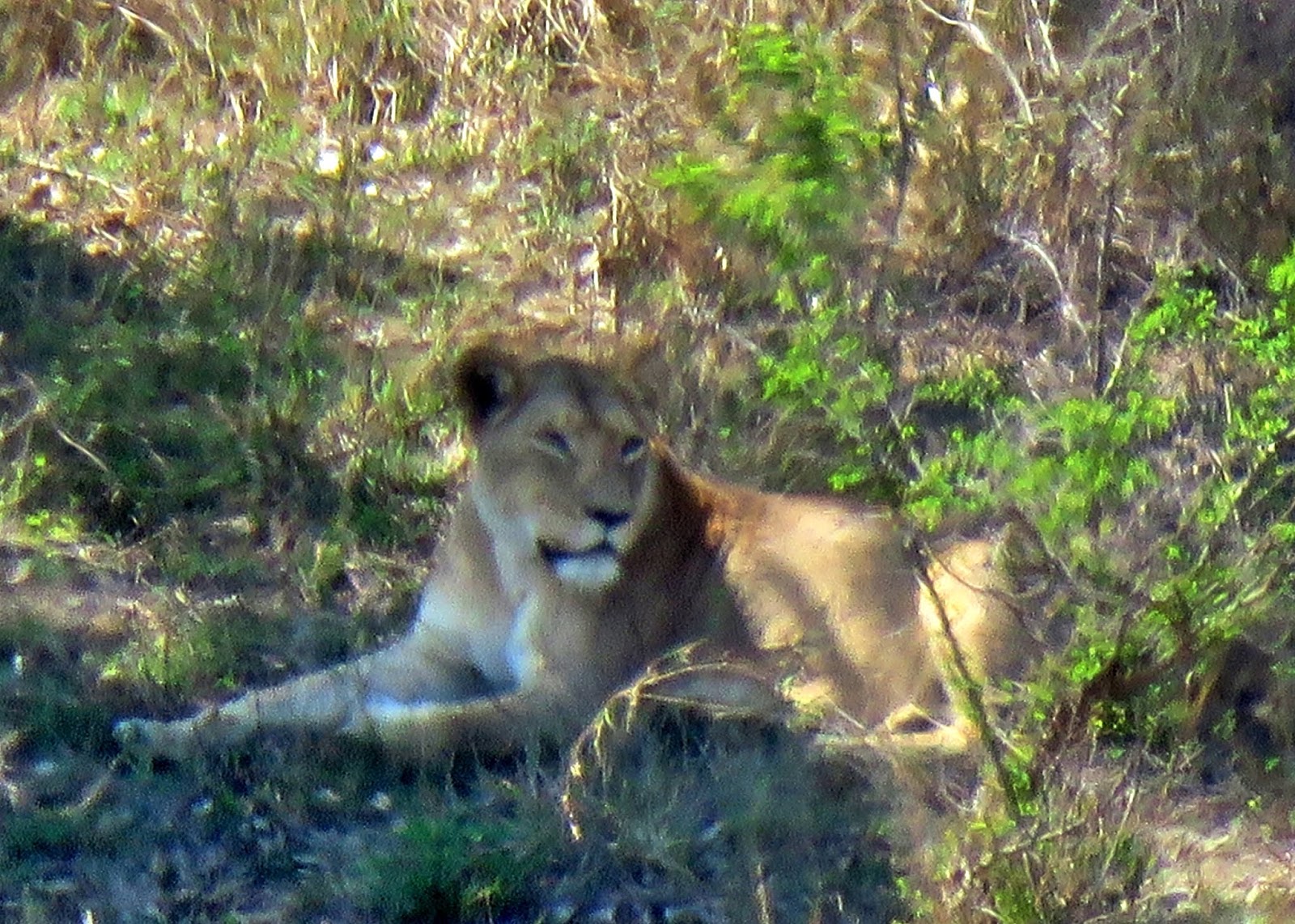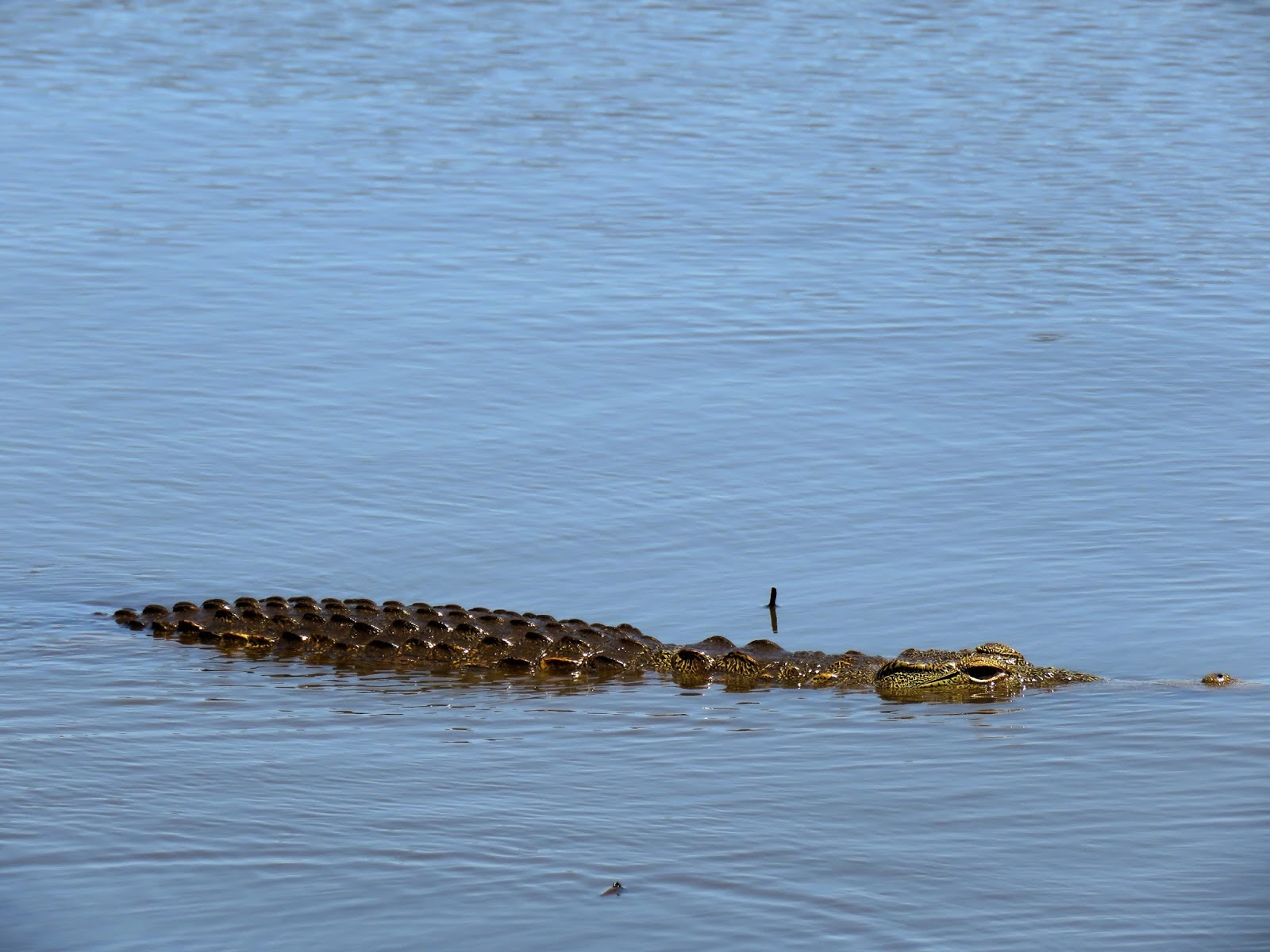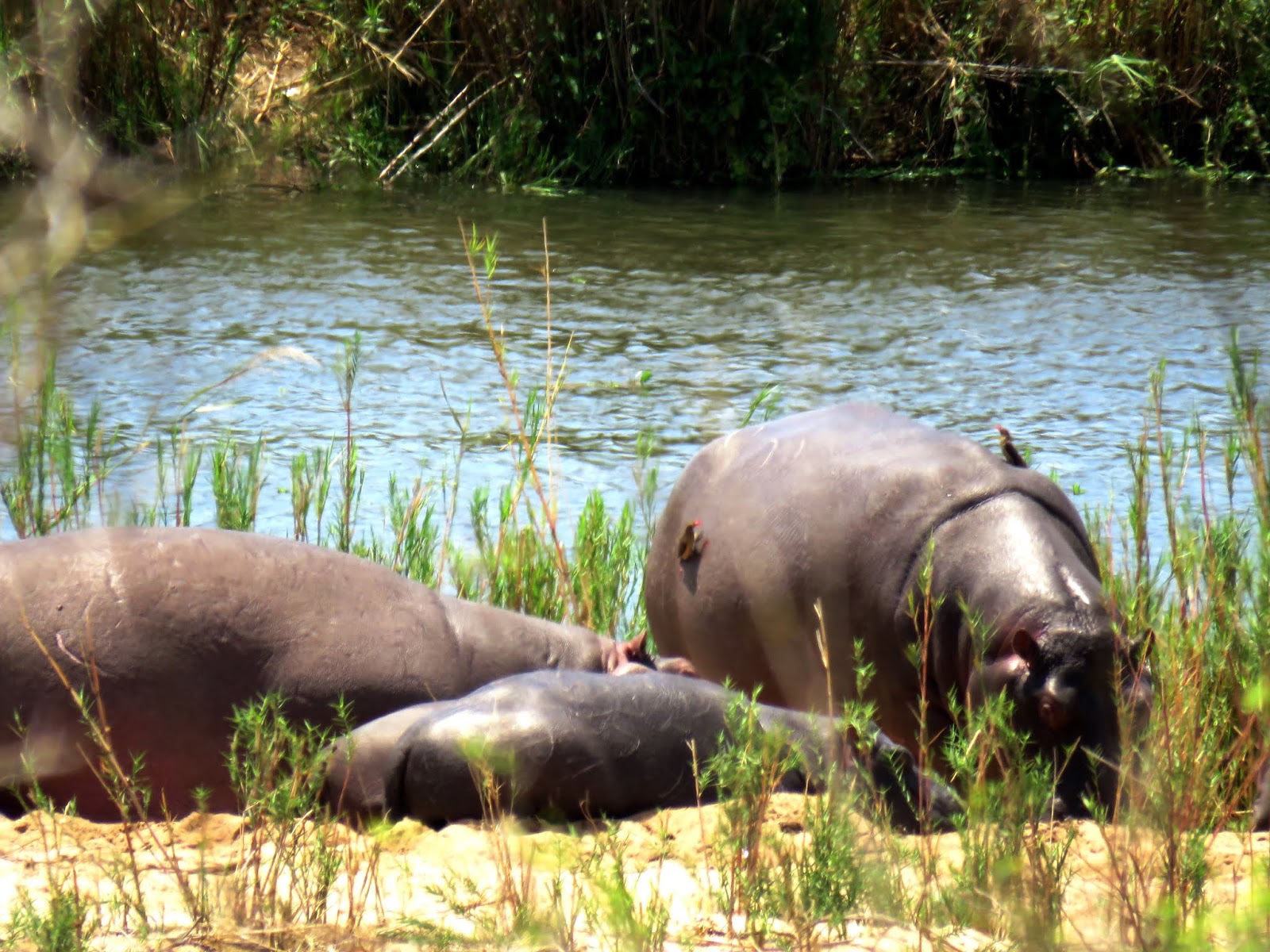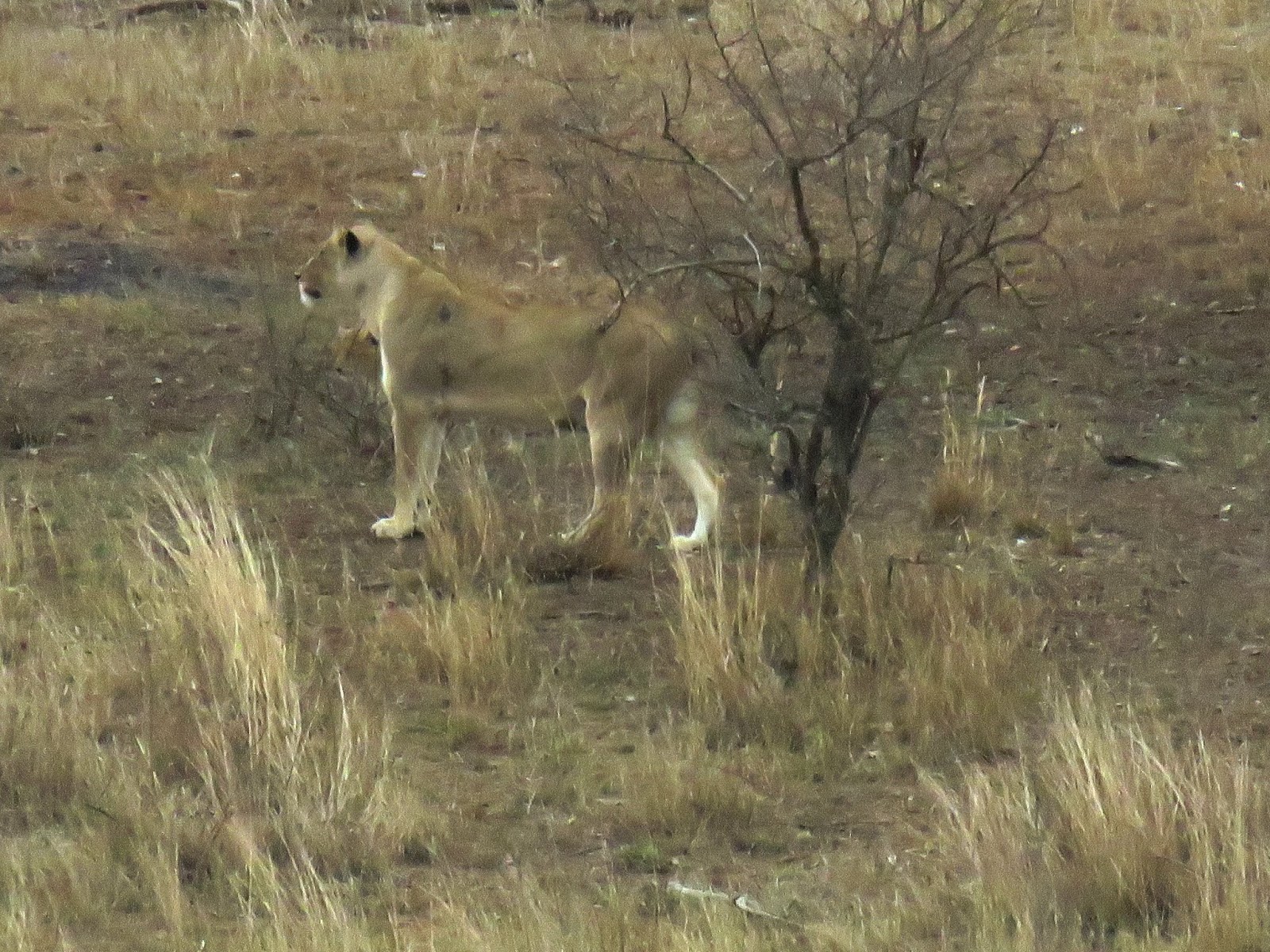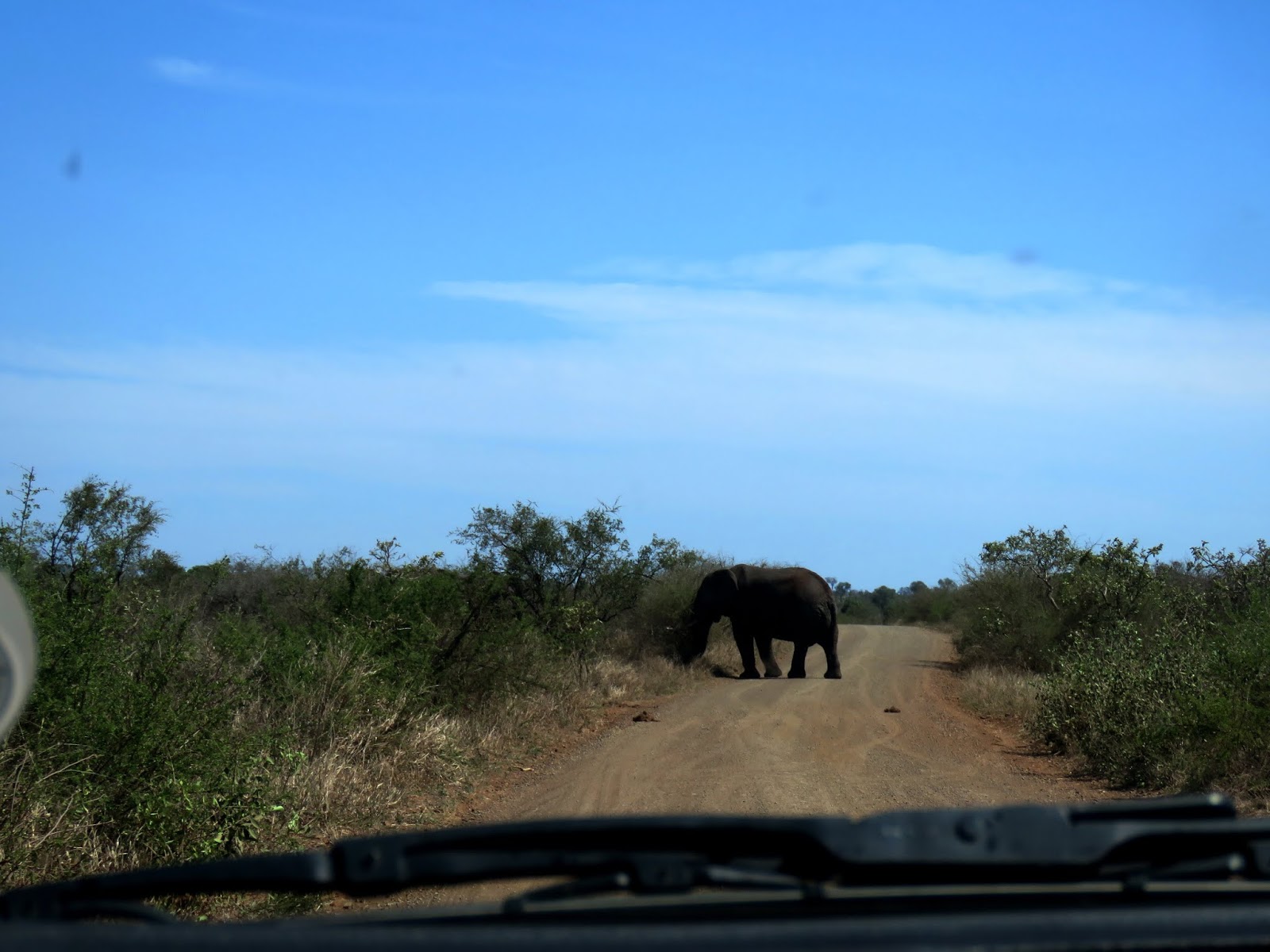 |
| Mr. & Mrs. Ostrich trotting down the road. Moments later they took off on a fast run into the bush. Ostriches can run up to 70 km (45 miles) per hour. |
“Sighting of the Day in the Bush”
 |
| Tom found this small gecko in the guest bathroom. We didn’t have a strainer so I fished it out with my hand where it promptly jumped to the floor and took off. We often see geckos in the house. They eat insects. |
Today, we’re off to the dentist to have our teeth cleaned followed by eye exams by the local optometrist. Neither of us has had an eye exam in the past six years since we began traveling.
Afterward, we’re returning to Spar for a few grocery items to fill in the blanks for Saturday’s Thanksgiving dinner party. Once back at the house, I’ll begin preparing the pie crusts for the eight pumpkin pies I’ll be making.
 |
| An ostrich in front of the house where we always find them. |
Why make so many pies? In our old lives, it was our tradition to give each couple who came for Thanksgiving dinner a pie to take home. It’s fun to relive this tradition here in the bush.
 |
| A pair of giraffes, each munching on opposite sides of the road. |
I’d started today’s post before we left for our two appointments each and additional grocery shopping. We just returned and I’m rushing to get today’s post uploaded so late in the day.
 |
| “In the wild, giraffes almost never lie down because of vulnerability to predators. They usually sleep standing, sometimes sitting, and they give birth standing up. When giraffes sleep, they curl their necks and sleep for about five minutes at a time, sleeping no more than 30 minutes a day.” |
We had such a great experience at our two appointments we’ll be sharing details in tomorrow’s post. The costs for services and products in South Africa are astoundingly lower than what we’d paid in the US. We’ll post details tomorrow.
The photos we’re posting today are a result of yesterday’s drive in Marloth Park. With fewer holidaymakers in the park right now, we anticipated we’d see plenty of wildlife and we were right.
 |
| This giraffe was sitting a short distance from the other giraffe as shown in the above photo. |
Before we reached our favorite river viewing overlook areas we were lucky to encounter many of the animals shown in today’s photos except the waterbuck (take at the river) and the few photos from our garden.
 |
| This baby zebra was so young its coat still looked fluffy and wrinkly. |
Generally, our almost daily drives last about two hours. With the upcoming busy dinner party, we knew we wouldn’t have time to make the drive over the next several days. Yesterday, we took our time, enjoying every sighting along the way.
Taking our time, we chat along the way as we peruse street after street searching for something unique or even slightly out of the ordinary. Seeing giraffes lying down isn’t necessarily the most unusual sighting in nature but we were taken by the beauty of these two magnificent animals at rest.
 |
| “The waterbuck’s body odor is so bad that it deters predators.” A male can weigh up to 260 kg (573 pounds). |
Although we frequently see ostriches, we’re always in awe of the way they walk with their heads held high and their confident and prideful demeanor. We often wonder how Mother Nature (or God or whatever higher power you may believe) created this magnificent earth would have decided ostriches held a significant purpose in the ecosystem.
 |
| Mom and baby bushbuck by the pond and another baby standing in the garden. Bushbucks only have one offspring per season. |
Somehow each creature, whether venomous or not, whether seemingly useful or not or, if merely food in the food chain, holds a meaningful purpose in their lives, the lives of others, and ultimately in our lives.
For that very reason, is what inspired me to stick my hand into the toilet bowl to rescue the gecko and let her be free. After a few minutes of vigorous hand washing, I was content to have saved the life of even one of the most common creatures in this land.
 |
| This young bushbuck always stays very close to her mom while others we’ve seen will wander off but not too far away. |
Also, tomorrow we’ll share an exciting story about a black mamba snake, one of the most venomous snakes on the African continent. Please check back.
Enjoy your day and evening!
Photo from one year ago today, November 15, 2017:
 |
| Three in one…Green Parrots…Tom’s photo. Love it! For more photos please click here. |

























